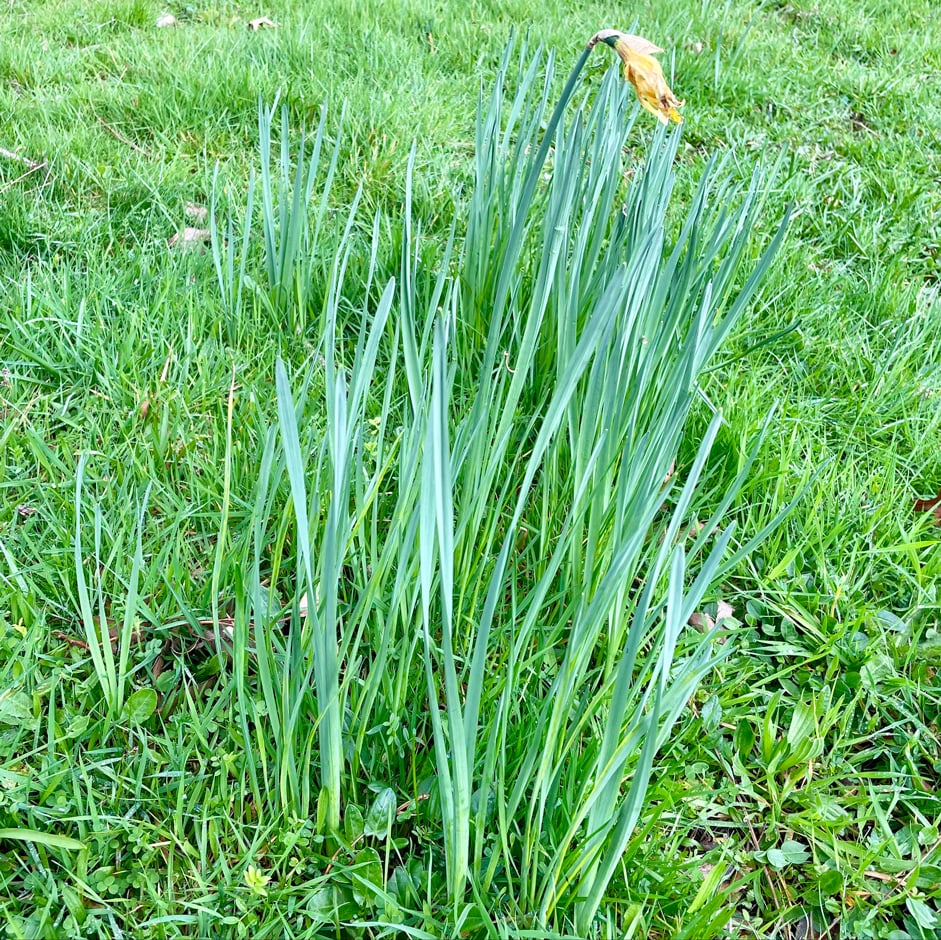Daffodil blindness
Daffodils bursting into bloom traditionally heralds the start of spring, so it can be disappointing when clumps of daffodils that have previously grown and flowered well begin to decline. However, there are things that can be done to get your bulbs blooming again.

Quick facts
Botanical name Narcissus
Plants affected Daffodils
Main causes Cultural conditions, pests and disease
Timing Spring
Jump to
What is daffodil blindness?
Newly planted daffodils usually grow and flower well, but in subsequent years flowering may be reduced or fail completely, although leaves are healthy and numerous. Daffodils that come up with foliage but no flowers are referred to as ‘blind’.
This condition may be due to the growing conditions or pests and diseases. It can be remedied in several ways depending on the cause.
Symptoms of daffodil blindness
The foliage of daffodils emerges each year but no flowers are produced.
Why do daffodil bulbs come up blind?
A number of causes can be to blame for daffodil blindness:
- Dry situation: In a dry place, or in drought conditions, daffodils may die down prematurely. After flowering, growth should normally continue for several weeks, allowing food reserves in the bulb to be replenished before the following season's flower buds are formed. If growth stops prematurely the bulb may, due to lack of food reserves, fail to form a flower bud
- Defoliation: Leaves removed soon after flowering by mowing or when tidying up the garden can lead to blindness. As with dryness, it prevents the bulb building up food reserves for the future
- Knotting: Gardeners often used to tidy up clumps of daffodils after flowering by drawing the leaves together into a knot. This is not recommended as it reduces their ability to function and may cause or increase the risk of blindness
- Seeding: Allowing seed capsules to form after flowering means that energy is diverted from the process of bulb rebuilding
- Nutrition: Good quality and newly purchased bulbs will normally flower well in their first year on any kind of soil, but in poorer light soils performance may rapidly decline without some additional soil improvements such as homemade compost
- Planting depth: Shallow planting encourages bulbs to divide, producing lots of bulbs that are too small to flower
- Planting time: Bulb performance can rapidly decline if bulbs are planted later than mid-November
- Overcrowding: After a few years, clumps of daffodils may become overcrowded, leading to poor flowering
- Pests: Narcissus bulb fly and narcissus eelworm may damage bulbs, leading to poor flowering
- Diseases: Diseases such as narcissus basal rot or daffodil viruses may cause bulbs to die or decline in vigour and flowering
How do I stop daffodils going blind?
To help avoid daffodil blindness, try the following;
- Select good quality bulbs that are firm to the touch
- If planting daffodils in turf, ensure you select cultivars suitable for naturalising such as ‘Peeping Tom’, ‘Fortune’ or ‘February Gold’
- Plant bulbs from mid-August to October
- Plant in an open sunny spot. Avoid planting bulbs in very dry areas. A site that is initially suitable may become less so over several years due to encroaching trees and shrubs, making it more dry and shady
- Always prepare the soil well before planting, forking in homemade compost if the soil is poor
- Plant bulbs at two to three times their depth
- Flowers should be removed or pinched off (deadheaded) as they fade
- Don’t tidy up the foliage by tying the leaves into a knot; leave them to die down naturally
- After flowering, leave a period of at least six weeks before leaves are removed or mown
- Improve dry soil by mulching around the bulbs in late winter with homemade compost
How do I get my daffodil bulbs to bloom again?
- When the weather is dry after flowering, water thoroughly to keep the ground moist until the foliage starts to die down naturally. With changing weather patterns and drier springs due to climate change, this is now the most common cause of daffodil blindness in the UK
- Check soil is not waterlogged when the bulbs are in growth and move bulbs if necessary
- Where flowering rapidly declines, try feeding the bulbs. As the growing points emerge in the spring apply a granular seaweed fertiliser at the rate given on the packet, sprinkled evenly on the soil surface around the bulbs. After flowering, especially for container-grown bulbs, apply a high potassium liquid feed, such as tomato food at one to two week intervals from when the blooms have faded until the first signs of yellowing of foliage
- If overcrowded groups of daffodils are not flowering, lift them when the foliage dies back in the summer. Improve the soil with homemade compost and then re-plant the bulbs so there is a 5-7.5cm (2-3in) gap between each one. Replant small bulbs in more fertile soil to encourage bulb build-up
- Where narcissus bulb fly is suspected, bulbs can be lifted and examined for signs of attack and the presence of larvae. Affected bulbs should be put in council green waste collection rather than on the compost heap.
Get involved
The Royal Horticultural Society is the UK’s leading gardening charity. We aim to enrich everyone’s life through plants, and make the UK a greener and more beautiful place.